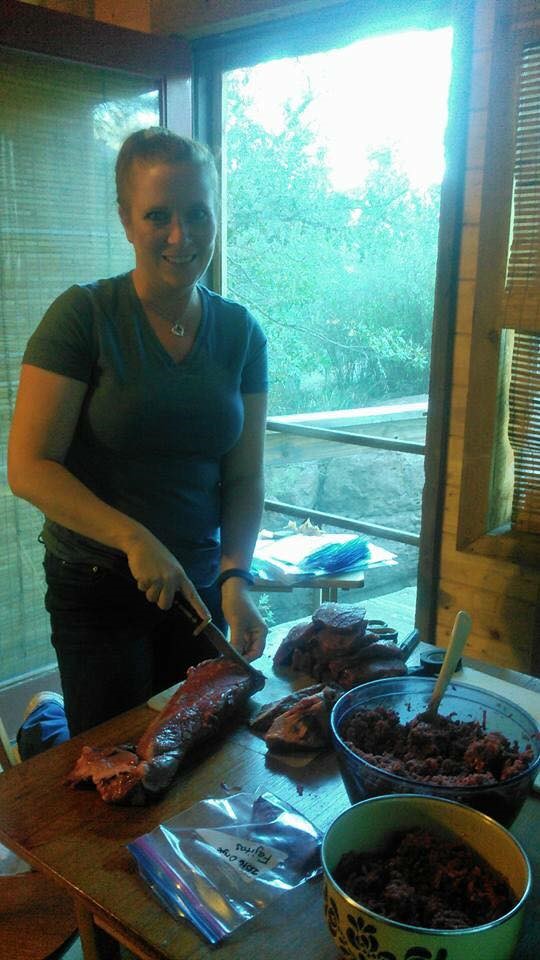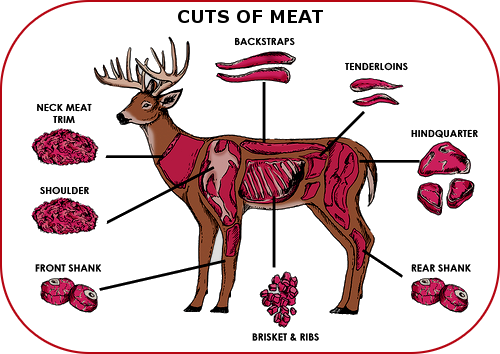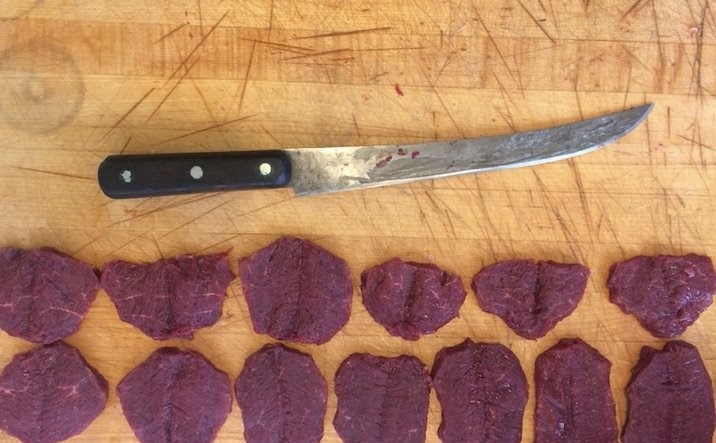As hunting season commences, we are taking all our hard work and prep over the summer and finally putting it to use. At this month’s Backcountry Hunters and Anglers meeting, we had Native New Mexican and biologist Don DeLorenzo share his knowledge of processing game meat.
Depending on what you are hunting, it is important to consider how many coolers you will need to pack and how much freezer space you will need when you get home. Prior to going out in the field, freeze water in milk jugs or gallon-size plastic bags. They will last far longer in your coolers than bags of ice and help cool your meat while transporting it back home.
 Temperatures may still be fairly warm, so you might have to deal with flies. Packing a container of black pepper and sprinkling it on your meat will help keep the flies away as you quarter and harvest your game. Another tip for you: game bags can often be bulky. If you have a vacuum sealer, use it to reduce the bulkiness of your game bag as you put it in your pack.
Temperatures may still be fairly warm, so you might have to deal with flies. Packing a container of black pepper and sprinkling it on your meat will help keep the flies away as you quarter and harvest your game. Another tip for you: game bags can often be bulky. If you have a vacuum sealer, use it to reduce the bulkiness of your game bag as you put it in your pack.
Shot placement is important to minimize lost meat to harvest. As you bring your game down, it is very important to know what you want to do with your kill. Are you planning on doing a full shoulder mount, European, keeping a hide with hair on or buckskin it? What you decide to do will also determine how you go about dressing the animal in the field, so it is important to think before you cut.
As you begin to field dress your game, it is important to keep game clean and free of hair. Remember to watch for scent glands. Not properly removing scent glands from game such as deer or a javelina can potentially ruin the meat you’re trying to harvest. It is also important to know your state laws. Some states may require proof of sex when harvesting an animal.
While it is not necessary to have a million different knives with you to field prep your game, there are a couple of tools you will want to have with you—a saw to split the pelvic bone and a good knife. While some will choose to use their knife and guide it along with their fingers working their way up the sternum, others may choose to carry a Wyoming knife to initially split the hide. Curved knifes can come in handy for skinning. Regardless of the knife you choose, it needs to be something that you are comfortable with.
It is important that the digestive and urinary tracts be removed without cutting the colon or bladder. Free the internal organs from the connective tissue along the back. If you are wanting to harvest the heart and liver, this would be the time to do so. By tipping the carcass, letting gravity do the work, you can roll out the entire digestive tract.
Some areas such as in Colorado or down in Southern New Mexico in the Lincoln area, deer may be subject to Chronic Wasting Disease (CWD). Again, check your proclamations to see if your unit or hunting area may be subject to CWD. If so, it is often recommended that you debone the animal in the field.
After you skin your animal, the clean hide will essentially become your workbench as you are harvesting your meat. Removing the backstraps that run the length of the backbone provides some fantastic steaks. The tenderloins are found on the opposite side of the backstrap, tucked up under the spine just forward of the pelvis. These tender cuts should be cooked fast, with a dry, high heat. Skillets or grills work best.
The front shoulders are great for pot roasts, hamburger, or sausage meat. The hindquarters, depending on the cut, can be as tender as the backstrap. You can easily slice it into steaks, fajita meat, roast or sirloin tips. The brisket is a tough cut, but when braised, can be a cut that melts in your mouth. The neck, rib, and shank meat are typically carved off and used for burger and stew meat.
Working quickly to cool the meat is important so that you prevent the meat from spoiling. Once you have your meat quartered, you will want to hang the animal in a cooler for a few days. A younger animal often does not need to hang for as long as an older mature bull does. Many taxidermists will have a cooler that you can hang your animal in.
 At this point, you can decide if you want to have the taxidermist process your game or if you want to save some money and pick it up after a few days to process it yourself. I personally enjoy processing my own animal. There is just something very satisfying about cutting the meat and filling your freezer and providing for your family.
At this point, you can decide if you want to have the taxidermist process your game or if you want to save some money and pick it up after a few days to process it yourself. I personally enjoy processing my own animal. There is just something very satisfying about cutting the meat and filling your freezer and providing for your family.
Hopefully you enjoyed these tips. Good luck this hunting season. Thanks for reading, and as always, happy hunting to you all!